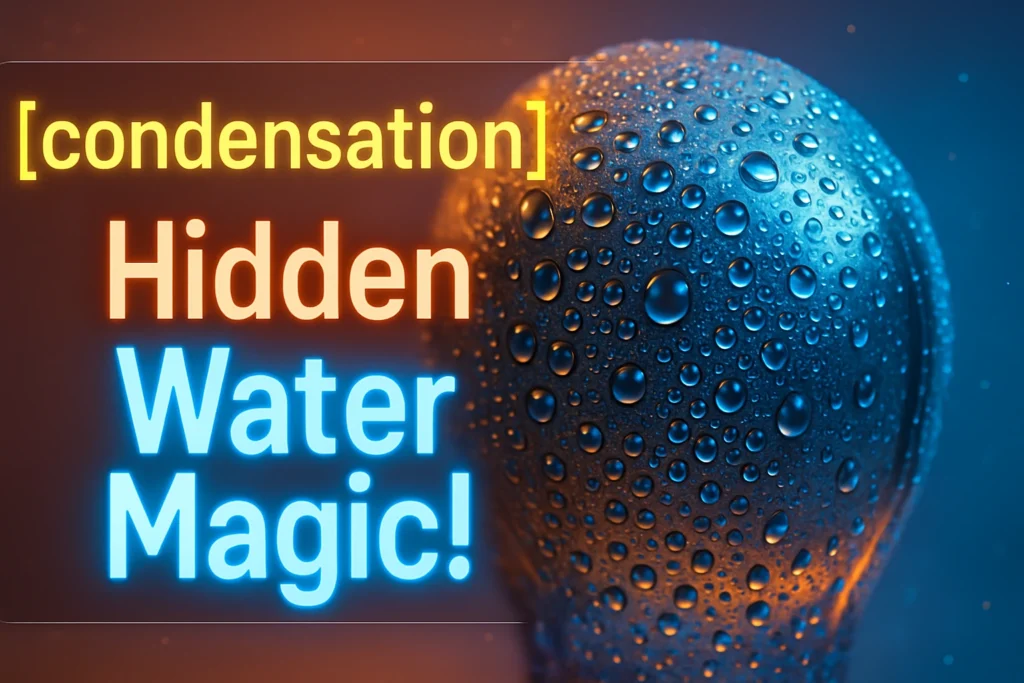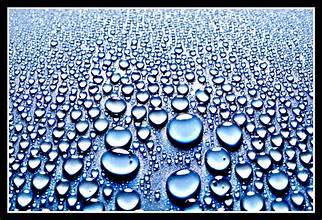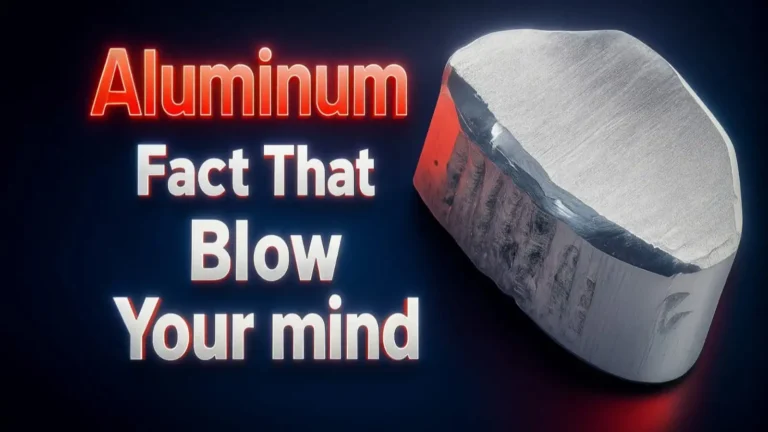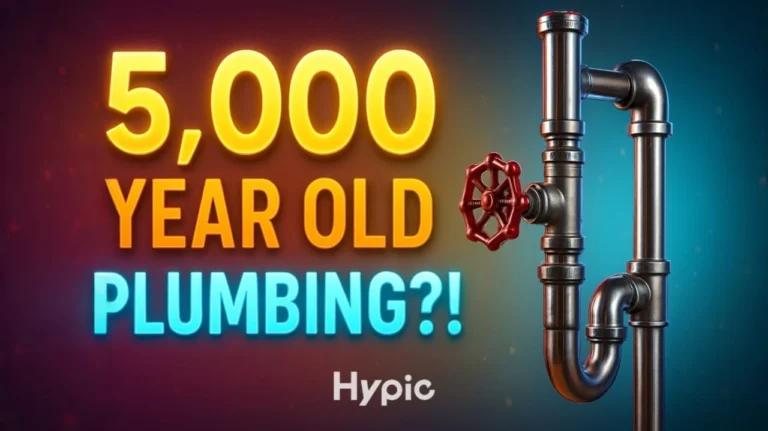
Hope you are fresh and fine, my brother/sister…” Welcome! Today we dive into fun facts about condensation that start on your cold soda can and end in deep space with atoms acting like one big super‑atom. Wild? Yes. Useful? Also yes! Whether you want fun facts about condensation for kids, need to fix window drip at home, or love geeky extras like fun facts about Bose Einstein condensate and fun facts about aldol condensation, this guide packs it all in simple words.
Stay with me. By the end you’ll be able to explain clouds, fog, contrails, chemistry lab tricks, and why your room window cries in winter. Let’s go!
Quick Answer: What Is Condensation?

Condensation is a change of state. A gas cools (or gets squeezed) until it becomes a liquid. When we talk about water in air, that gas is water vapor. When vapor turns to tiny drops, we get liquid water on a surface or in the air as a cloud, fog, or mist. This simple gas to liquid change drives weather, makes dew, and powers tech like fridges and distillers.
In short: Warm air holds water. Cool it enough and water falls out. That’s condensation.
Why Condensation Matters in the Water Cycle
The global water cycle moves water around Earth. Evaporation vs condensation is the big back‑and‑forth engine. Water leaves oceans and lakes as vapor. High in the sky that vapor cools. Tiny drops form around dust—condensation nuclei. Clouds grow. Drops join. Rain falls. Water is back on land.
No condensation, no clouds. No clouds, no rain. That is why every school lesson on the water cycle includes it. When vapor turns to drops, latent heat release warms the air a bit. That heat helps storms grow strong.
For further reading please visit.
- 35 Amazing Facts About Aluminum That Will Blow Your Mind
- The Future Benefits of Agentic AI in Autonomous Systems
- Can You Shoot a Grenade? The Shocking Truth Behind This Explosive Myth Revealed!
Everyday Places You See Condensation
Look around and you will spot it everywhere:
- Morning dew on grass.
- Foggy bathroom mirror after a hot shower.
- Water beads on a cold drink can.
- Window condensation on a chilly night.
- Fog that forms when you breathe out on a cold day.
- Water droplets inside a car windshield with people breathing.
- Cloudy glasses when you walk out of AC into humid air.
The Science: Temperature, Dew Point & Relative Humidity
To get condensation, air must become saturated. That can happen two main ways:
- Cool the air until it hits its dew point temperature.
- Add more water vapor until the air can’t hold more at that temperature.
Relative humidity is how “full” the air is compared to the maximum it can hold. At 100% it’s full. Cool it just a little and water starts to form.
Mini Demo: Make Instant Window Fog
You need: cold metal spoon (freezer), cup of warm water, timer.
Steps:
- Chill spoon 10 minutes.
- Hold spoon over warm water cup.
- Watch fog beads form fast.
This is a simple classroom condensation experiment.
Fun Facts About Condensation (Main List)
- Your cold drink sweats: Not leaking—the air around it is!
- Clouds are billions of drops: All born from vapor cooling high up.
- You carry water in your breath: That fog plume on cold days is mini cloud science.
- Condensation recycles Earth’s water: Key link in the water cycle.
- It releases heat: Tiny warming that helps storms build power.
- Desert beetles drink fog: Some life forms harvest water from air.
- Planes paint the sky: Contrails are long, thin condensation clouds.
- Fridges depend on it: Cooling coils turn vapor to liquid to move heat.
- Chem labs love it: Reflux and distillation cooling coil steps rely on controlled condensation.
- Chem bonus: The aldol condensation reaction makes bigger molecules—and yes, water leaves!
- Physics bonus: Ultra‑cold atoms can merge behavior in a bose einstein condensate state.
- Home hack: Reduce indoor moisture to stop wall drip and mold.
- Plants & animals catch dew: Nature’s backup water tap.
- Fog machines work by condensation: Cool vapor + particles = spooky air.
- Even volcano plumes condense: Steam cools into clouds.
Fun Facts About Condensation Water Cycle Edition
- Clouds need dust. Tiny salt, smoke, or pollen grains act as condensation nuclei so drops can start.
- Big storms power up when rising moist air condenses and releases heat.
- Raindrops start tiny, then collide and grow inside the cloud.
- Snow is frozen condensation that forms when vapor skips the liquid step and deposits as ice crystals.
Fun Facts About Condensation for Kids
- Warm air holds water like a sponge. Cool it and it drips.
- Clouds are sky‑sponges squeezing out rain.
- Dew is sky water hiding in the grass.
- Fog is a cloud that came down to hug the ground.
Fun Facts About Condensation Trails (Contrails)
The white lines behind jets are contrails from airplanes—short for condensation trails. Jet engines push out hot exhaust with water vapor. High up, air is super cold and often near saturation. Vapor freezes fast into tiny ice crystals. A long line cloud forms.
Fun Facts About Aldol Condensation (Chemistry Bonus)
In organic chemistry, certain molecules with carbonyl groups can join to build bigger carbon chains. The step that makes the bigger piece is called aldol condensation when water (or another small bit) leaves.
Fun Facts About Bose Einstein Condensate (Mind‑Blowing Physics)
A Bose Einstein condensate happens when certain atoms (bosons) get chilled almost to absolute zero. They slow so much their wave patterns overlap. They start to act like one big super atom. Wild, right?
Nature Hack: Animals That Drink Morning Dew
Some animals live where liquid water is rare. They grab morning dew or fog droplets that form by dawn condensation.
Home Help: Stop Bad Condensation Indoors
- Vent bathrooms and kitchens.
- Run exhaust fans when cooking or showering.
- Use dehumidifiers in rooms.
Classroom Condensation Experiments
- Jar Cloud – Hot water + jar + ice plate + match smoke.
- DIY Distiller – Shows refrigeration condenser concept.
Myth‑Buster: Chemtrails vs Real Contrails
Contrails are frozen water from jet exhaust in cold upper air. Moist high‑altitude air = lasting contrail. Dry air = short contrail.
Recap
“Every drink of water you take once floated in a cloud because of condensation. That tiny phase change keeps Earth alive.”
Conclusion
Condensation links weather, climate, home comfort, chemistry, and even quantum physics. We covered fun facts about condensation trails, fun facts about the aldol condensation, and the mind-bending fun facts about Bose Einstein condensate.
FAQ
Q1. What temp does condensation start?
When air cools to its dew point temperature.
Q2. Why do my windows sweat in winter?
Warm indoor air hits cold glass. Drops form.
Q3. Are contrails dangerous?
No, they’re just frozen water vapor.
Q4. Does condensation clean water?
Yes, distillation uses condensation to make pure water.
Call To Action
Loved these fun facts about condensation? Share this post and comment with your own condensation photo!







